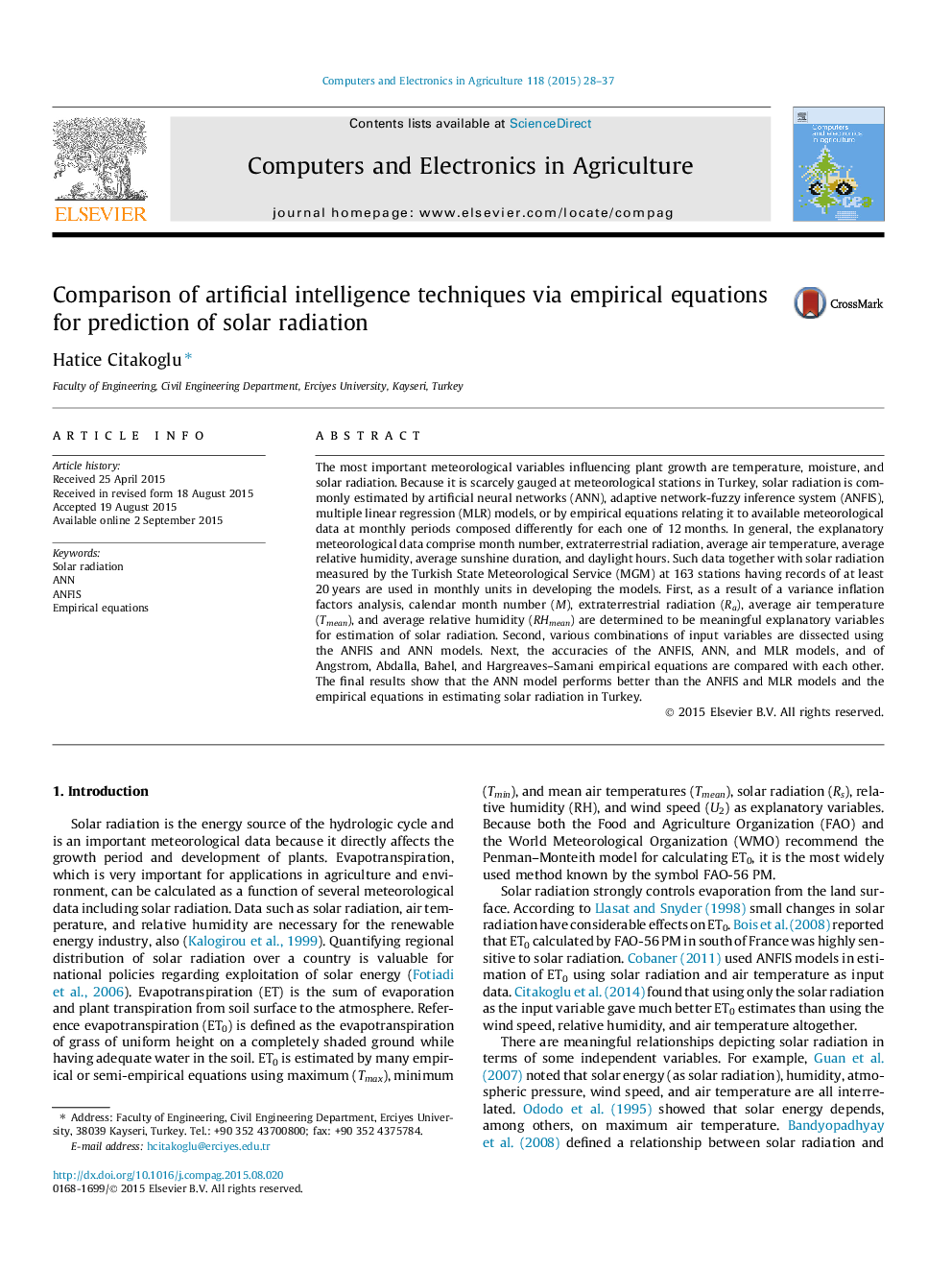| Article ID | Journal | Published Year | Pages | File Type |
|---|---|---|---|---|
| 84072 | Computers and Electronics in Agriculture | 2015 | 10 Pages |
•I modeled monthly solar radiation values by ANN, ANFIS models, and empirical equations.•Input variables are meteorological data and the month numbers.•ANN model is found to perform better than the other models.
The most important meteorological variables influencing plant growth are temperature, moisture, and solar radiation. Because it is scarcely gauged at meteorological stations in Turkey, solar radiation is commonly estimated by artificial neural networks (ANN), adaptive network-fuzzy inference system (ANFIS), multiple linear regression (MLR) models, or by empirical equations relating it to available meteorological data at monthly periods composed differently for each one of 12 months. In general, the explanatory meteorological data comprise month number, extraterrestrial radiation, average air temperature, average relative humidity, average sunshine duration, and daylight hours. Such data together with solar radiation measured by the Turkish State Meteorological Service (MGM) at 163 stations having records of at least 20 years are used in monthly units in developing the models. First, as a result of a variance inflation factors analysis, calendar month number (M), extraterrestrial radiation (Ra), average air temperature (Tmean), and average relative humidity (RHmean) are determined to be meaningful explanatory variables for estimation of solar radiation. Second, various combinations of input variables are dissected using the ANFIS and ANN models. Next, the accuracies of the ANFIS, ANN, and MLR models, and of Angstrom, Abdalla, Bahel, and Hargreaves–Samani empirical equations are compared with each other. The final results show that the ANN model performs better than the ANFIS and MLR models and the empirical equations in estimating solar radiation in Turkey.
